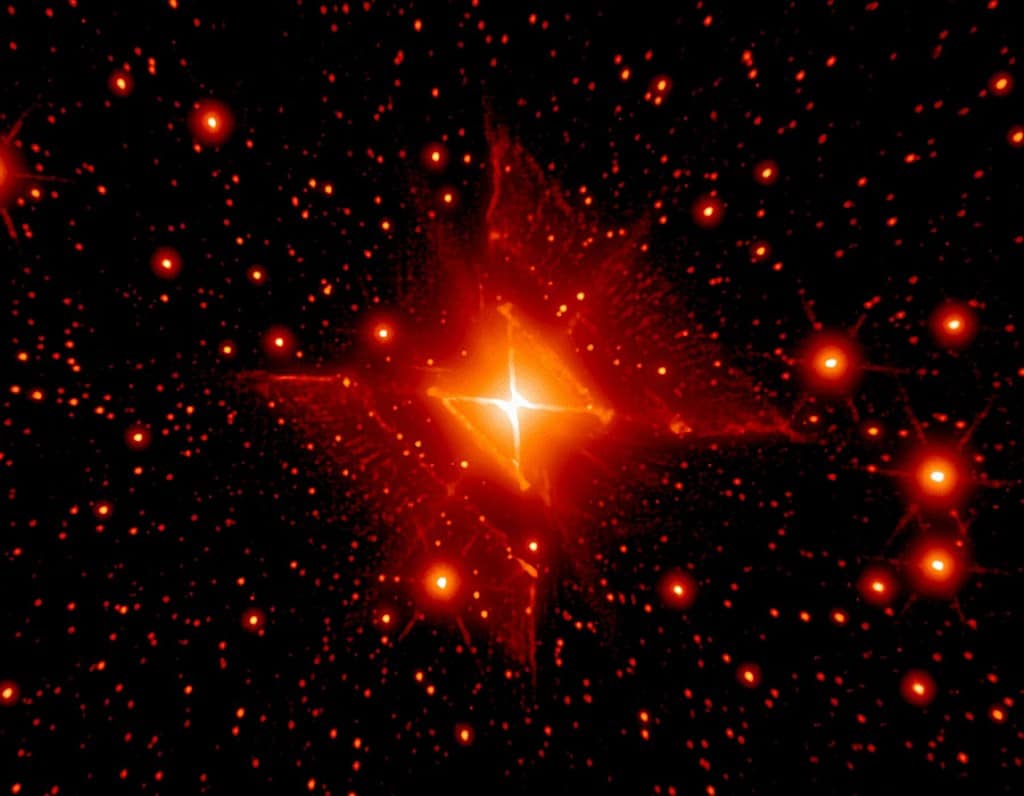The Cosmos with HD 44179
The Red Rectangle Nebula (HD 44179), so called because of its red color and unique rectangular shape, is a bipolar protoplanetary nebula, located about 2,300 light-years away toward the constellation Monoceros.
Protoplanetary nebula are formed by old stars, on their way to becoming planetary nebulae. In a few thousand years, once the expulsion of mass is complete, a very hot white dwarf star will remain and its brilliant ultraviolet radiation will cause the surrounding gas to glow.
The star at the centre of the Red Rectangle, known as MWC 922, was similar to our Sun but is now ejecting its outer layers to make the nebula, and giving it the distinctive shape. The shedding of the outer layers began about 14,000 years ago and is ejected from the star in two opposing directions.
It also appears that the star is a binary system, a close pair of stars that orbit each other with a period of about 10 1/2 months. Interactions between these stars have probably caused the ejection of the thick dust disk that obscures our view of the binary. It is an infrared source; stars surrounded by clouds of dust are often strong infrared sources because the dust is heated by the starlight and radiates long-wavelength light.
The disk has funneled subsequent outflows in the directions perpendicular to the disk, forming the bizarre bi- conical structure we see as the Red Rectangle. The reasons for the periodic ejections of more gas and dust remain unknown.
Seen from space, the Red Rectangle is not really rectangular, but has an overall X-shaped structure with additional complex structures of spaced lines of glowing gas, a little like the rungs of a ladder, which is interpreted as arising from outflows of gas and dust from the binary star in the center.
Astronomers are not yet certain which types of molecules are producing the red color that is so striking in the Red Rectangle, but suspect that they are hydrocarbons that form in the cool outflow from the central star.
They discovered the spectral signatures of anthracene and pyrene (hydrocarbons) in the ultraviolet light emitted by the nebula – potentially vital organic molecules for the formation of life. Until recently, it was thought that the ultraviolet light would quickly destroy these hydrocarbons.
